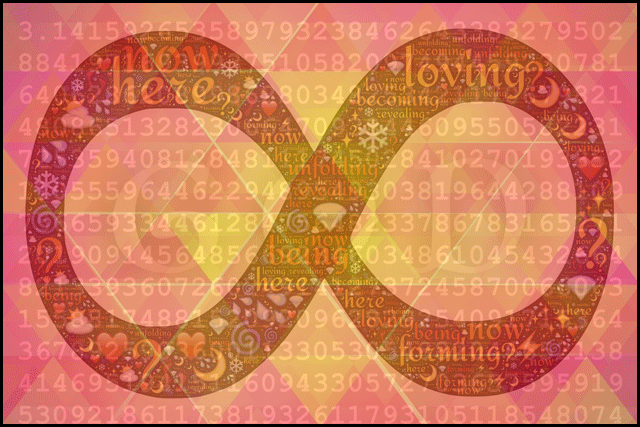I’d actually meant to write this post in order to upload it on March 14. But I got distracted yesterday, and so missed that boat. But I figured I would go ahead and post it anyway. After all, it’s not like it is anything serious — just a bunch of musing.
 I had been idly musing about a number of things: the Holy Trinity and the nature if infinity. And into those thoughts dropped the matter of pi, and its apparently never ending supply of decimal values.
I had been idly musing about a number of things: the Holy Trinity and the nature if infinity. And into those thoughts dropped the matter of pi, and its apparently never ending supply of decimal values.
It started as I was thinking about the Holy Trinity and how to explain this nature of God to people outside of Christianity. How to convey the concept of a unity of identity, while also talking about a trinity of persons and yet not meaning a polytheistic gathering?
For me, one of the best descriptions of the Trinity, in terms of helping the reader understand the concept, is in Dorothy L. Sayers’ The Mind of the Maker. Although I don’t quite agree with the terminology she chose to use, the structure she explains works quite well. Father, Son, Holy Spirit — Concept, Manifestation, Communication Energy: the three elements work as a single unity.
That led me to consider how the number three has importance in so many belief systems. Some even consider three to be a perfect number.
So, I thought, if three is so significant, why did God create the world so that the value of π isn’t exactly 3? What is with the infinitely long extra fraction value to it? Why is pi rendered 3.14159265359 and on and on into infinity, with no repeating patterns?
As a bit of whimsy, I wondered if it wasn’t God’s sense of humor using it as a description of the relationship of humanity to the divinity. The Trinity is sufficient in itself. But on the other side of the decimal point of pi, there is this infinite string of numbers. The string will never be enough to equal the Three, or change it in any way. The string is something added to the universe, but no matter how long the string is, it will never cross over the decimal point to change the Three. We are God’s creation, but we will never be His equal. We will always be on the other side of the decimal point — included, but not really part of the unity of the Three.


